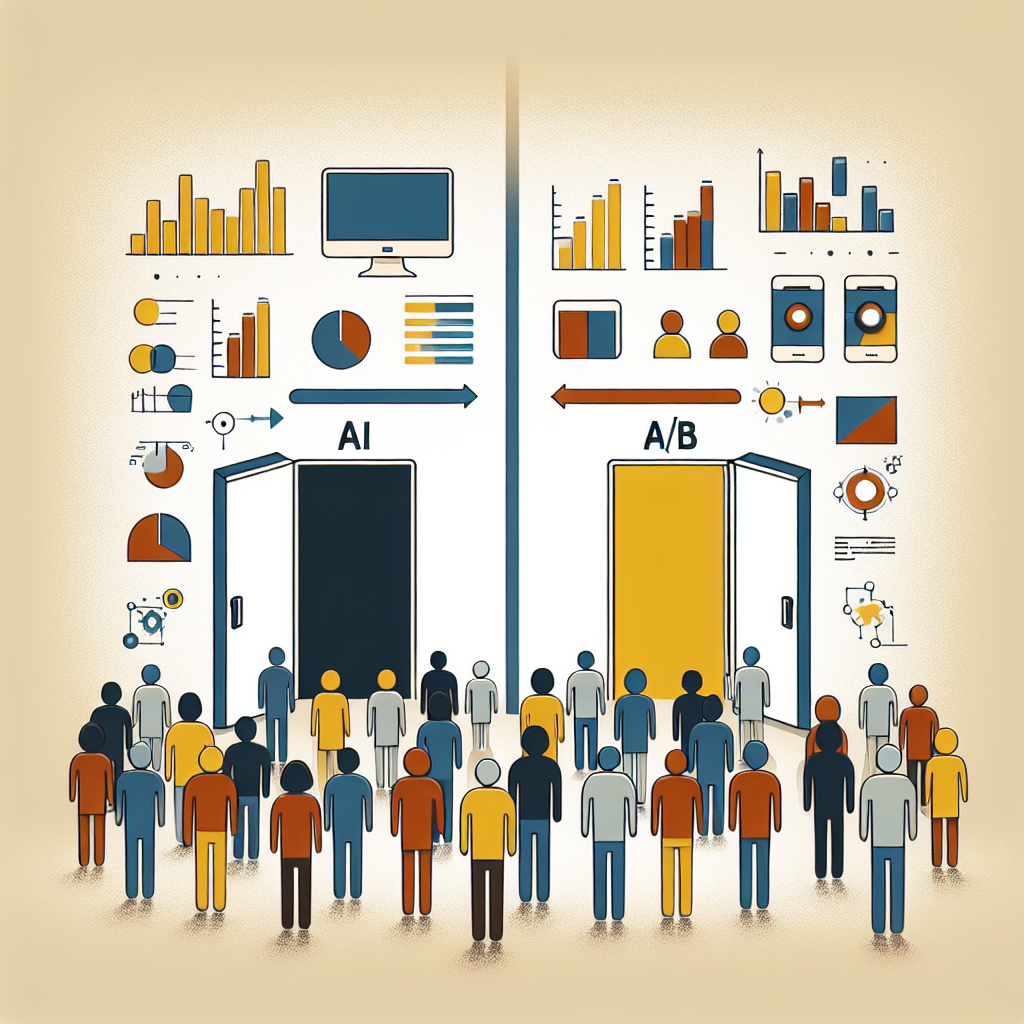Implementing AI for A/B Testing and Optimization
A/B testing is a powerful tool used by marketers and product managers to make data-driven decisions about their products and services. It involves testing two versions of a webpage, app, or email against each other to determine which one performs better in terms of a specific goal, such as conversion rate or click-through rate.
Traditionally, A/B testing has been a manual and time-consuming process, requiring teams to set up experiments, monitor results, and analyze data manually. However, with the advancements in artificial intelligence (AI) and machine learning (ML), it is now possible to automate and optimize the A/B testing process, making it more efficient and effective.
Implementing AI for A/B testing and optimization involves using algorithms to analyze large amounts of data and make real-time decisions about which variations to test and how to optimize them. This can help businesses to run more experiments, gather more insights, and ultimately improve their conversion rates and user experience.
There are several ways in which AI can be used for A/B testing and optimization, including:
1. Predictive Analytics: AI algorithms can analyze historical data to predict which variations are likely to perform best in future experiments. This can help teams to prioritize their testing efforts and focus on the variations that are most likely to drive results.
2. Automated Testing: AI can automate the process of setting up and running A/B tests, saving time and resources for teams. It can also monitor experiments in real-time and make adjustments to optimize performance.
3. Personalization: AI can analyze user behavior and preferences to personalize the content and experiences that are tested in A/B experiments. This can help businesses to deliver more relevant and engaging experiences to their customers.
4. Multivariate Testing: AI can handle more complex experiments, involving multiple variations and interactions between them. This can help businesses to test more hypotheses and uncover insights that would be difficult to find with traditional A/B testing methods.
Overall, implementing AI for A/B testing and optimization can help businesses to improve their decision-making process, increase the efficiency of their testing efforts, and drive better results for their products and services.
FAQs:
Q: What are the benefits of using AI for A/B testing and optimization?
A: Using AI for A/B testing and optimization can help businesses to make data-driven decisions, automate the testing process, personalize user experiences, and run more complex experiments. This can lead to improved conversion rates, higher engagement, and better overall performance for products and services.
Q: How can businesses get started with implementing AI for A/B testing?
A: Businesses can start by evaluating their current A/B testing process and identifying areas where AI can be helpful. They can then explore AI-powered testing tools and platforms that are available in the market, or work with AI experts to build custom solutions for their specific needs.
Q: What are some challenges of using AI for A/B testing?
A: Some challenges of using AI for A/B testing include the need for high-quality data, the complexity of AI algorithms, and the potential for bias in the results. It is important for businesses to carefully design their experiments, monitor the performance of AI algorithms, and interpret the results in a thoughtful and unbiased manner.
Q: How can businesses measure the effectiveness of AI for A/B testing?
A: Businesses can measure the effectiveness of AI for A/B testing by tracking key metrics such as conversion rates, click-through rates, engagement metrics, and revenue. They can also compare the performance of AI-powered experiments with traditional A/B tests to evaluate the impact of AI on their testing efforts.
In conclusion, implementing AI for A/B testing and optimization can help businesses to improve their decision-making process, increase the efficiency of their testing efforts, and drive better results for their products and services. By leveraging the power of AI and machine learning, businesses can gain valuable insights, optimize their user experiences, and ultimately achieve their business goals.

